

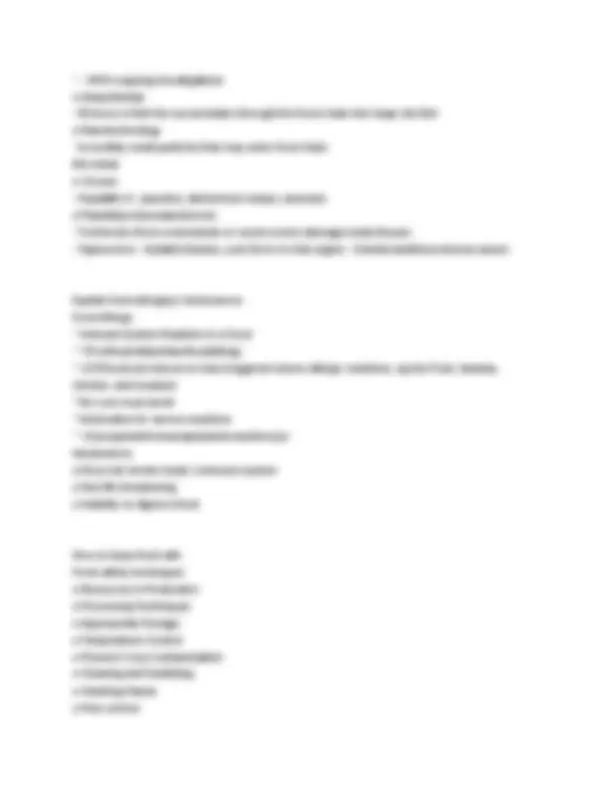

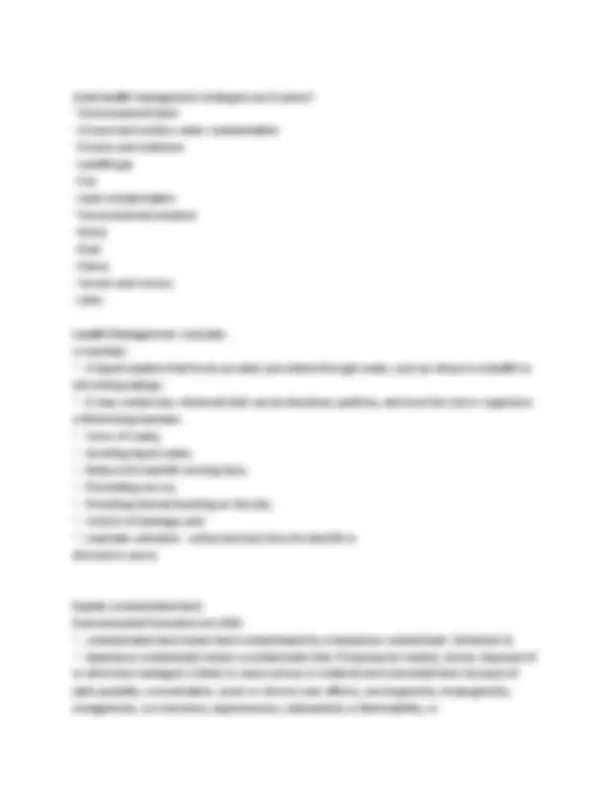
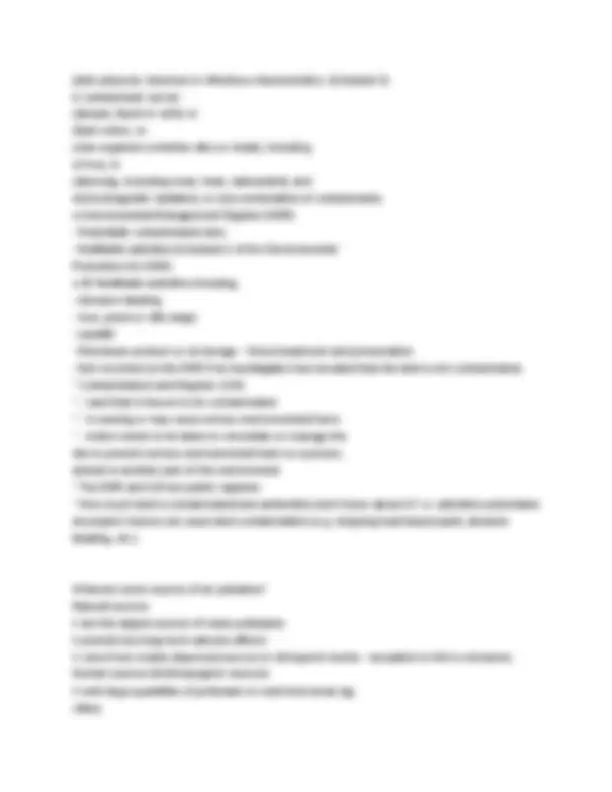
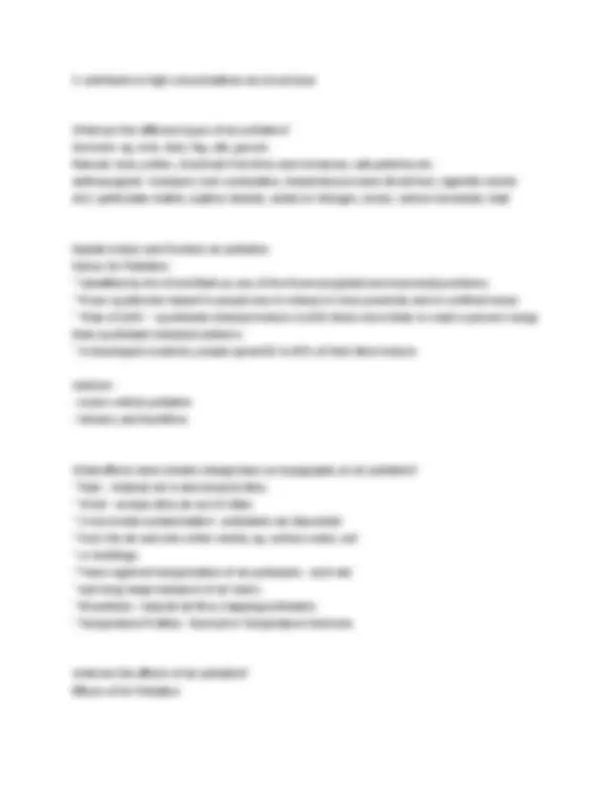
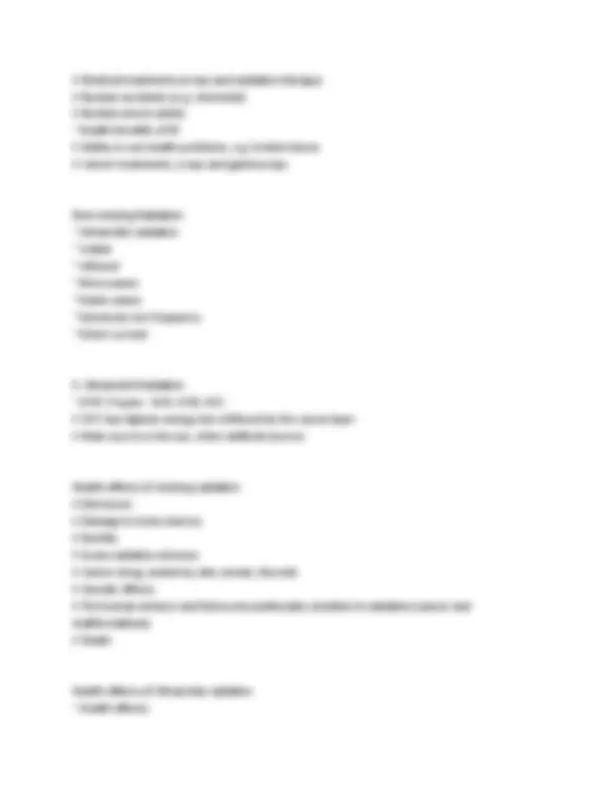
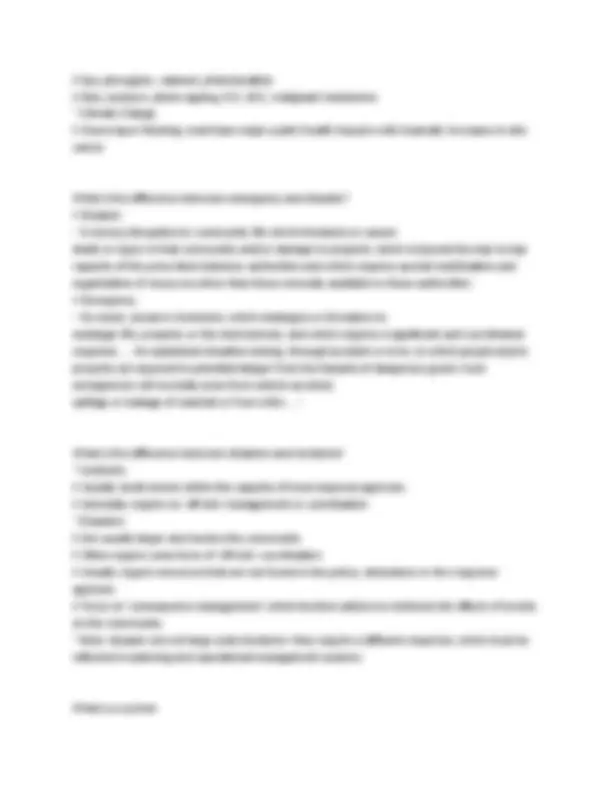
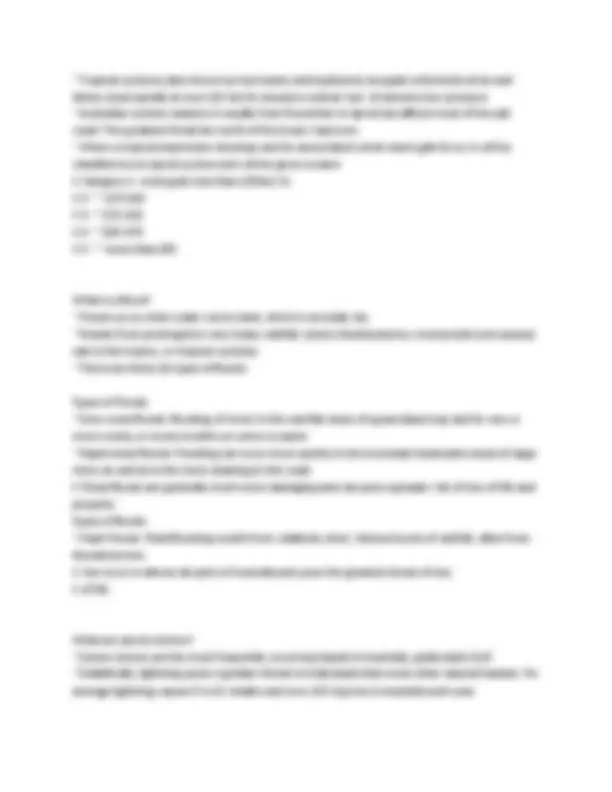
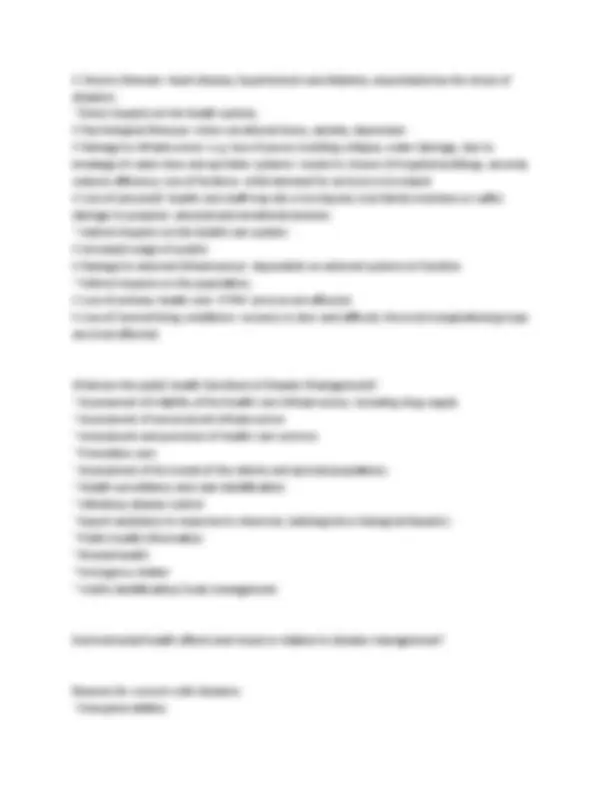

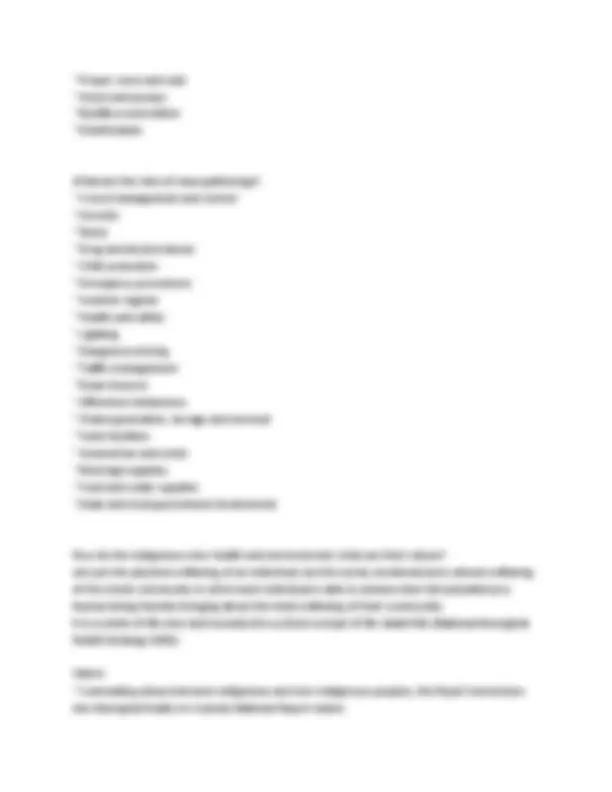
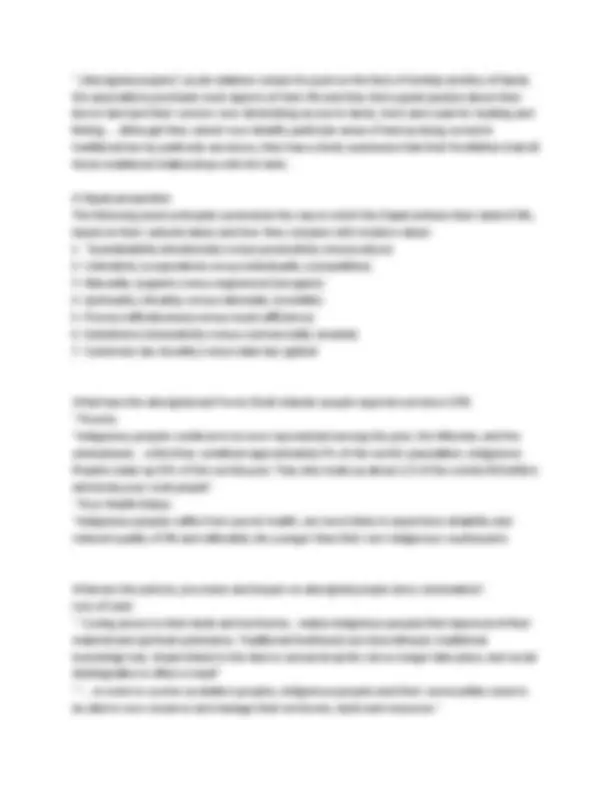
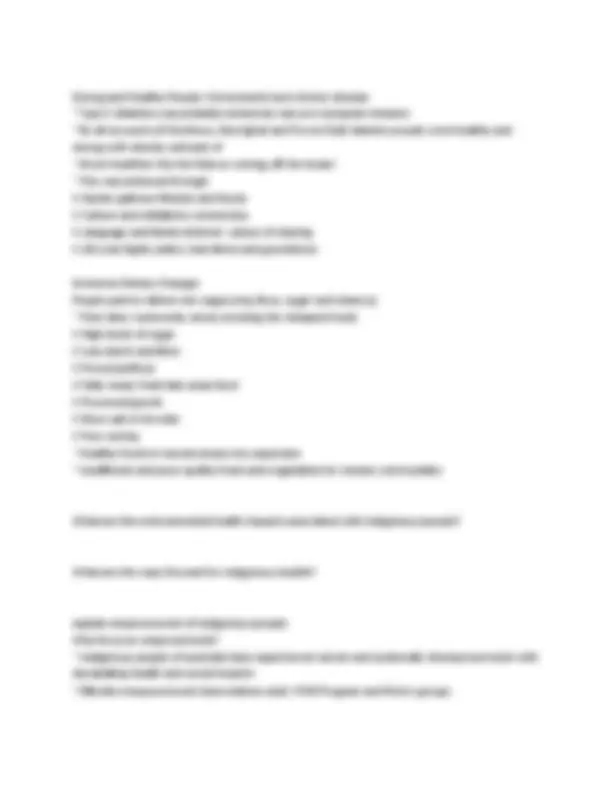
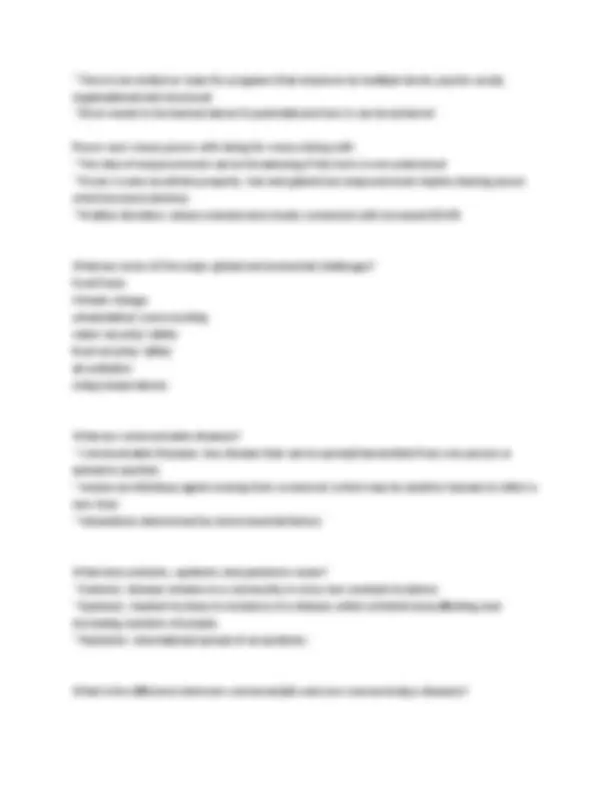
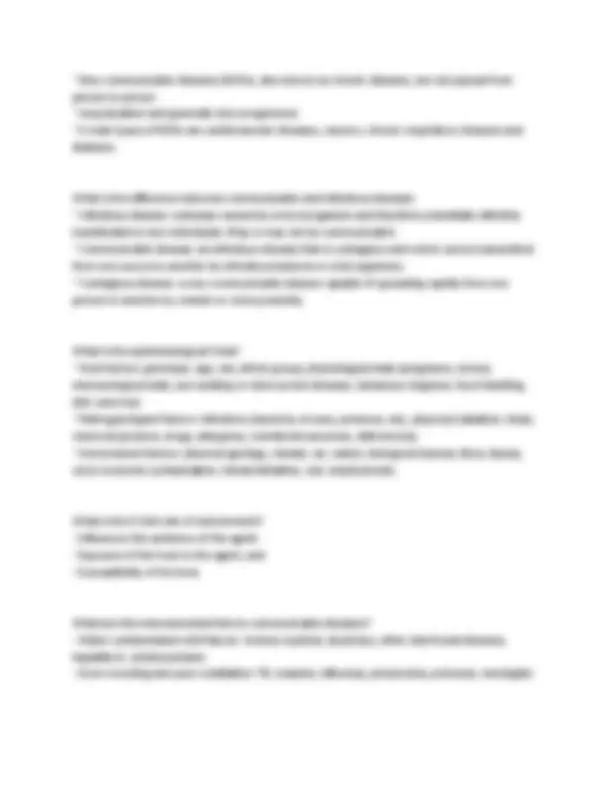
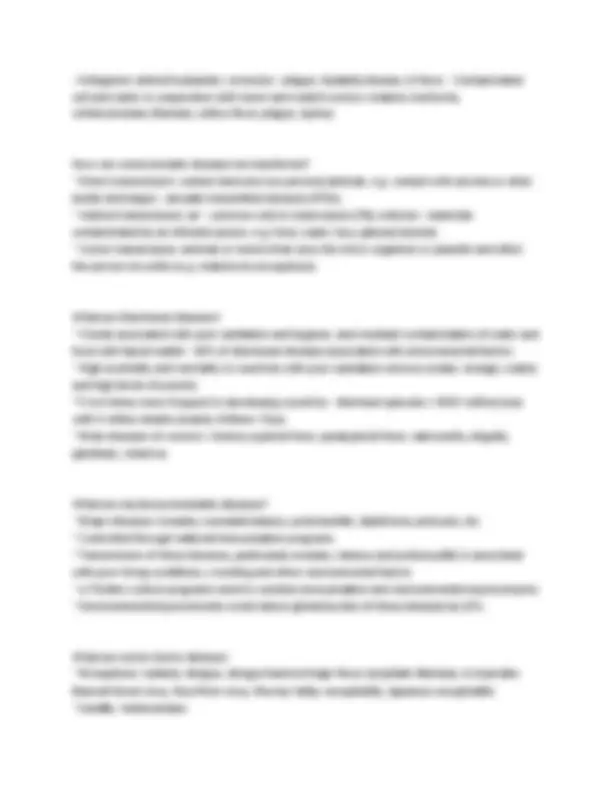
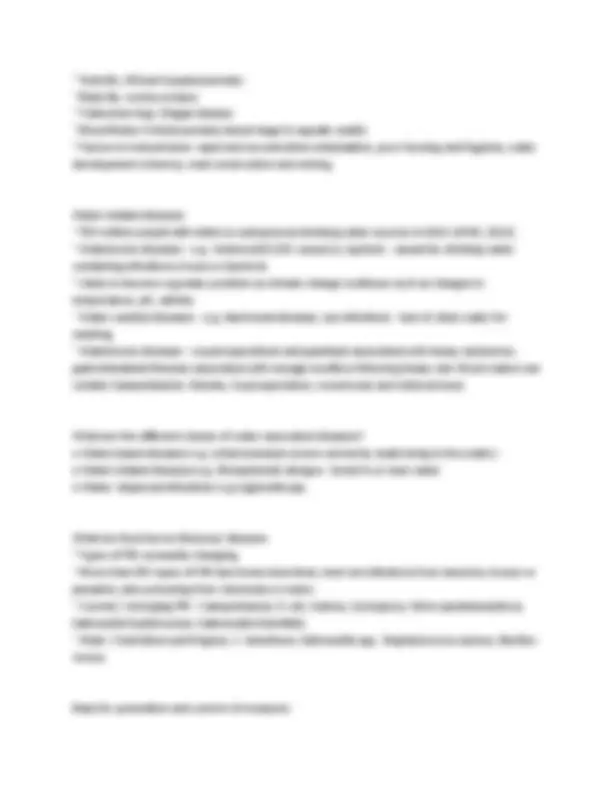
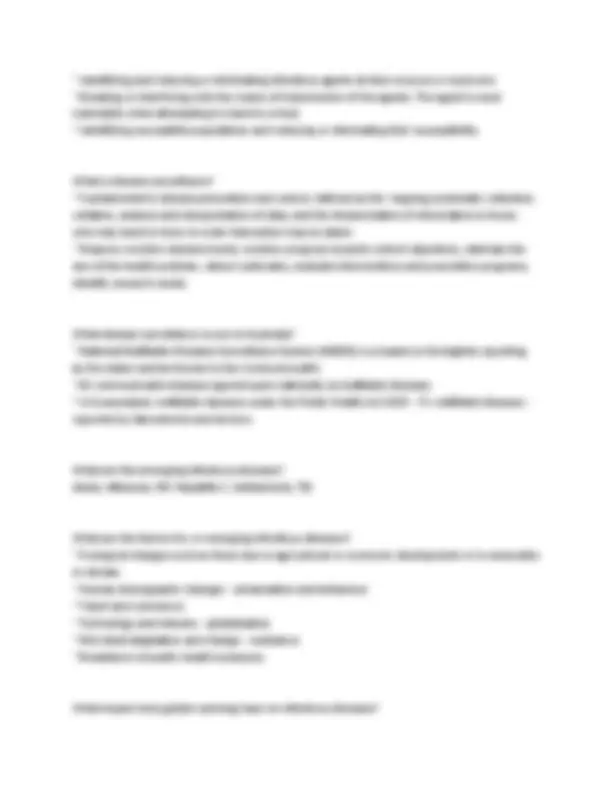

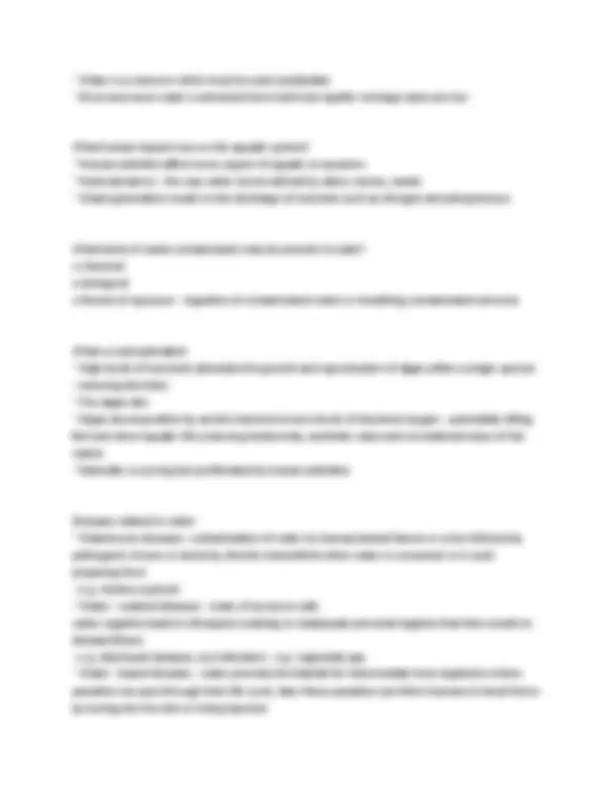
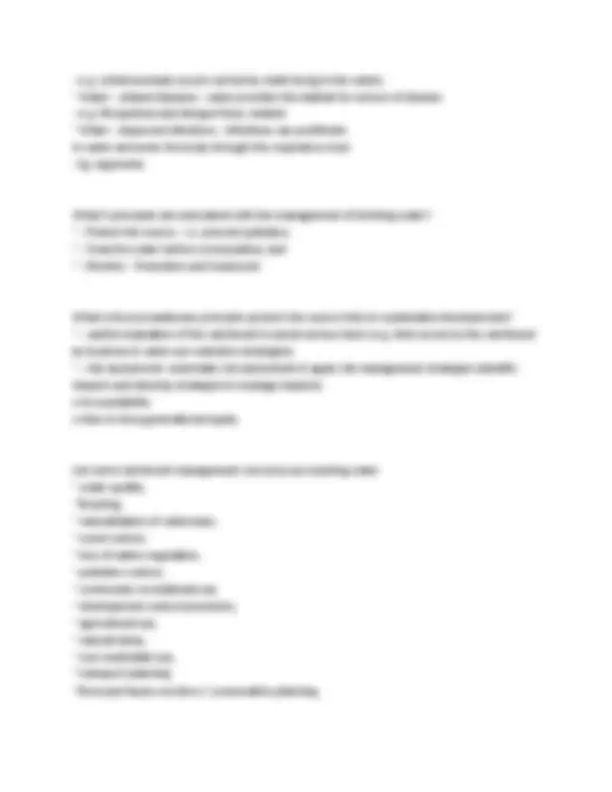
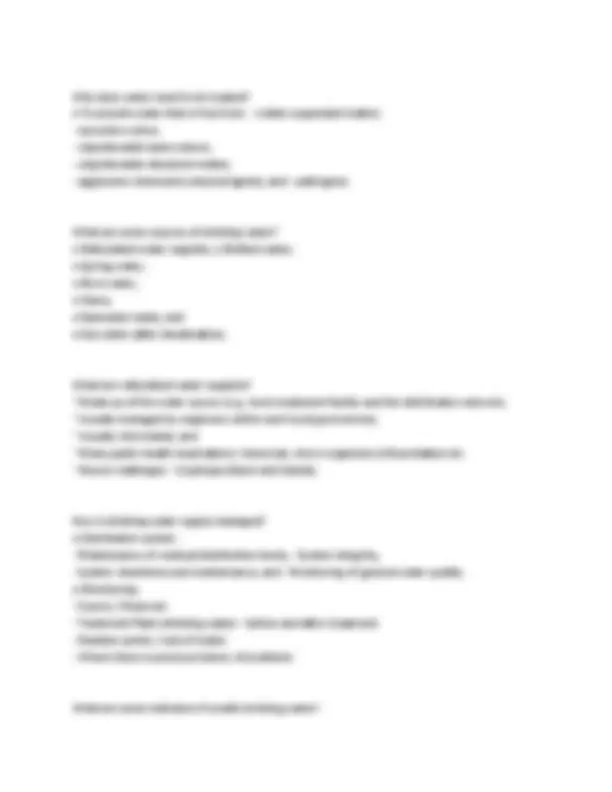
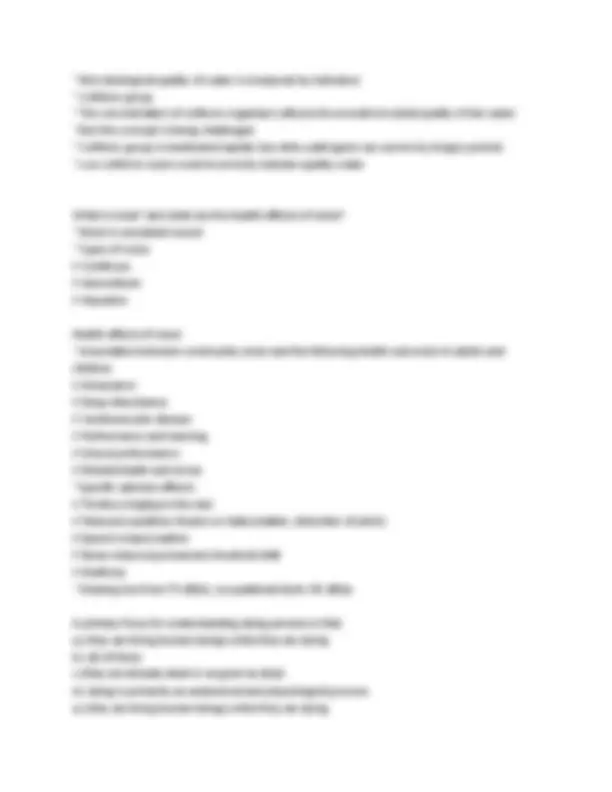
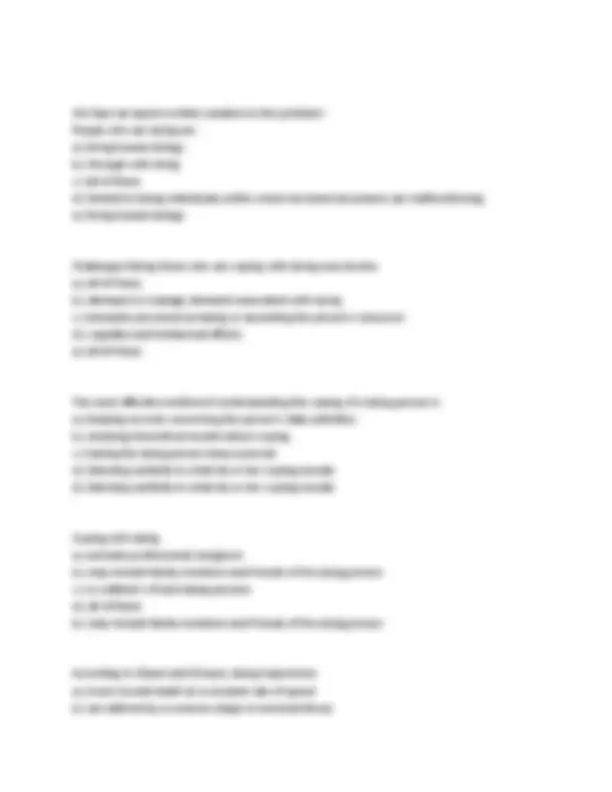
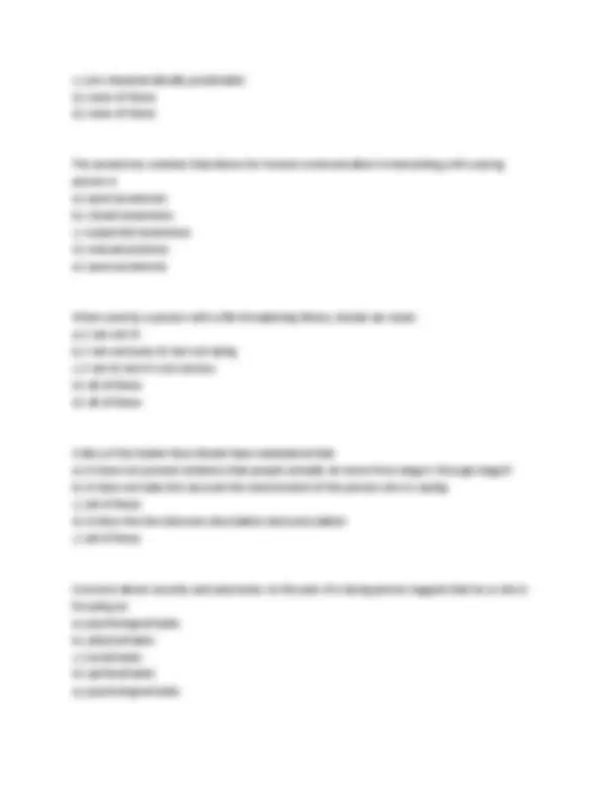
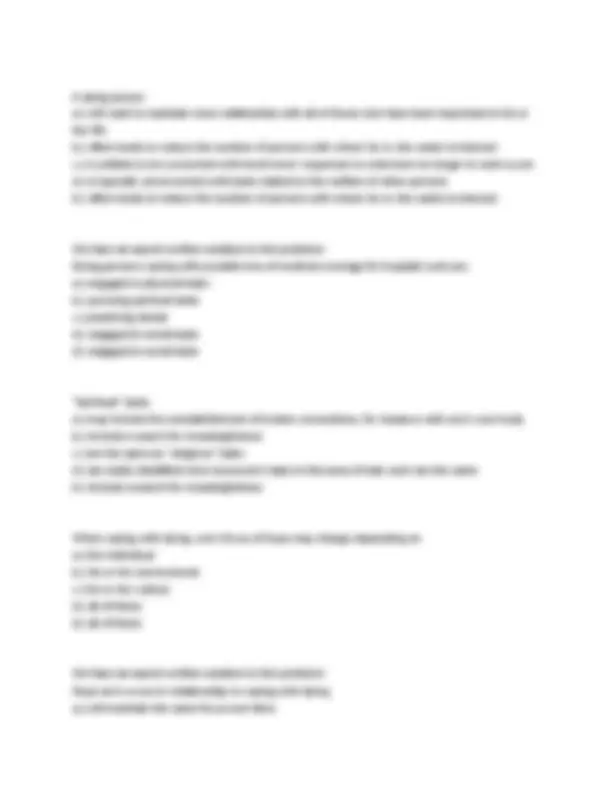
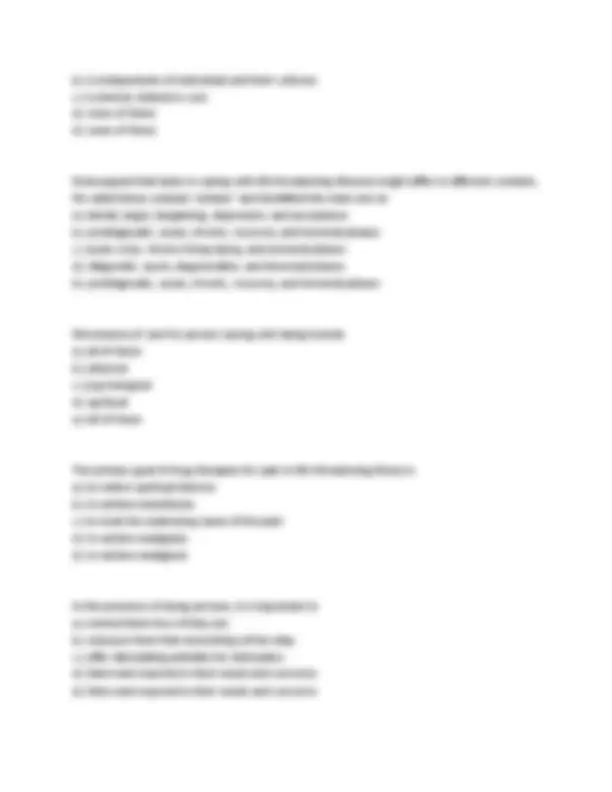

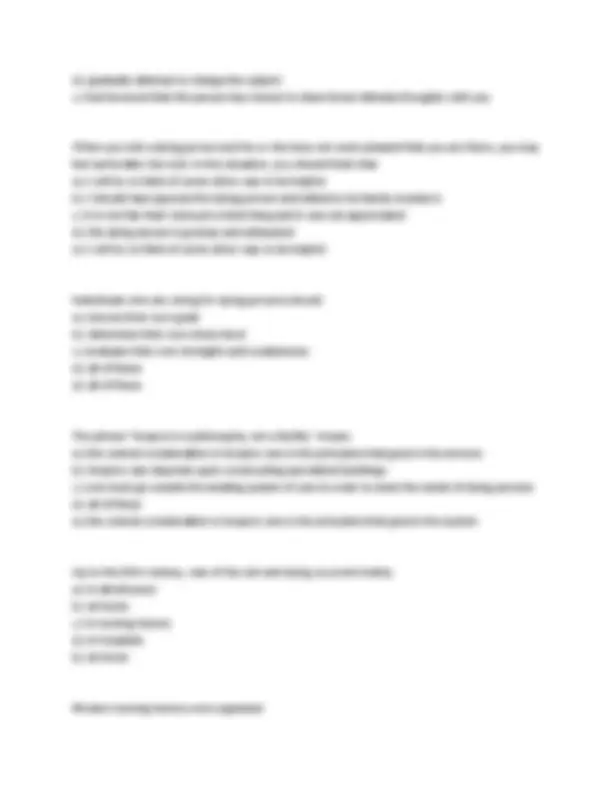
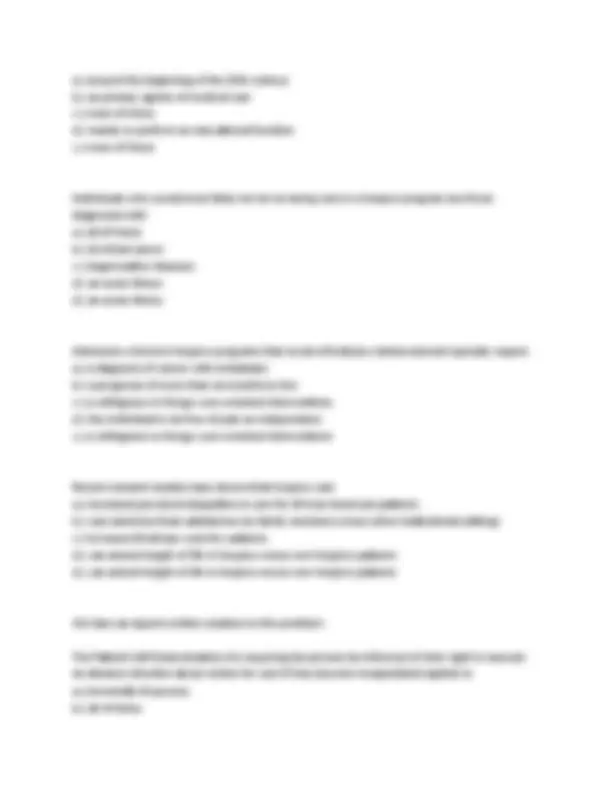
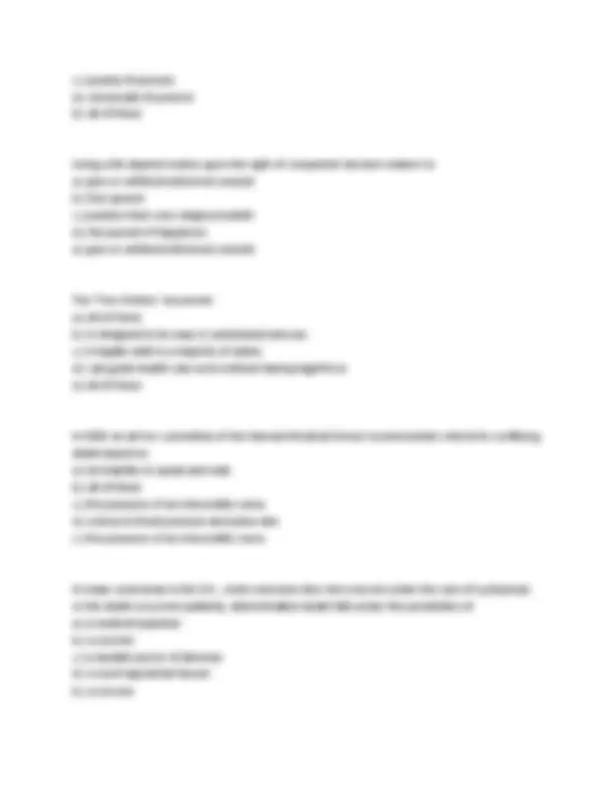
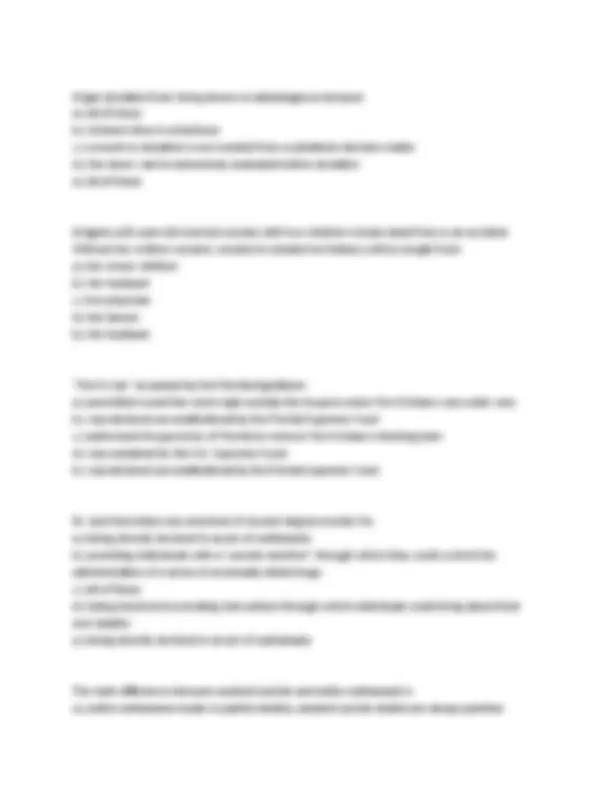
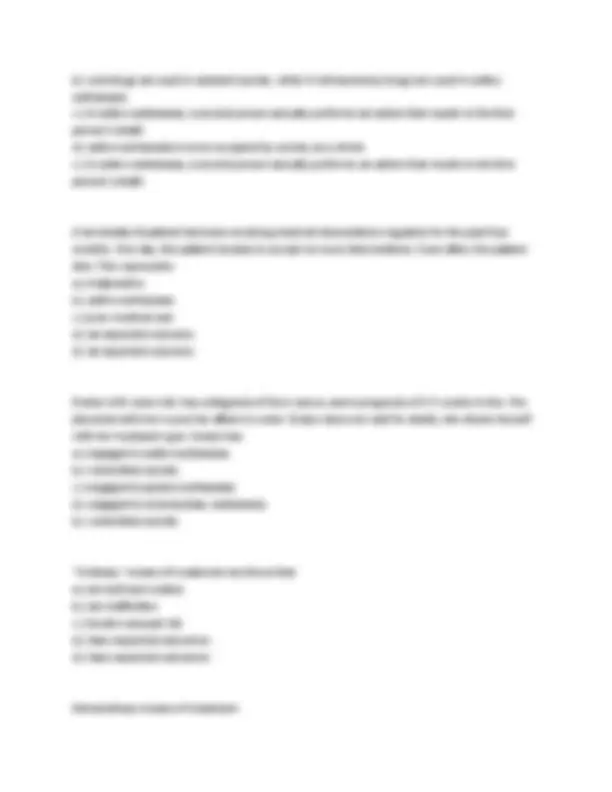
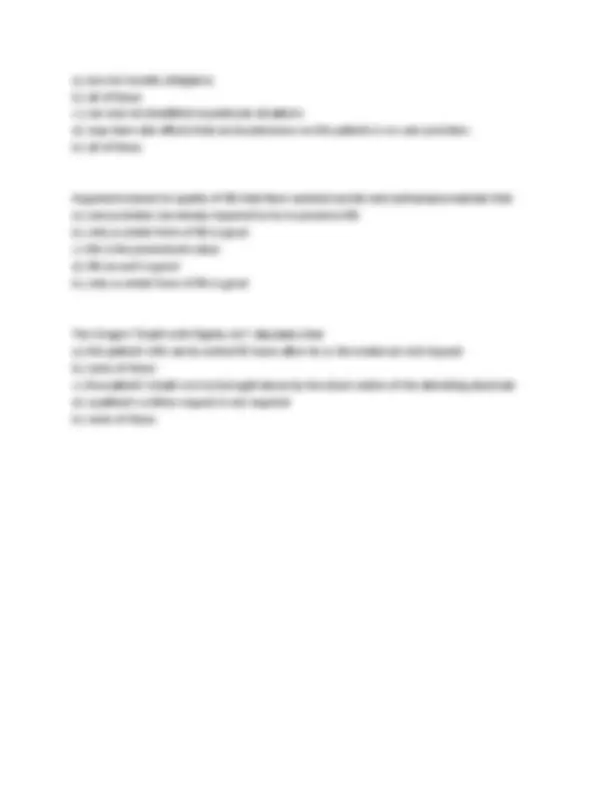


Study with the several resources on Docsity

Earn points by helping other students or get them with a premium plan


Prepare for your exams
Study with the several resources on Docsity

Earn points to download
Earn points by helping other students or get them with a premium plan
Community
Ask the community for help and clear up your study doubts
Discover the best universities in your country according to Docsity users
Free resources
Download our free guides on studying techniques, anxiety management strategies, and thesis advice from Docsity tutors
NURS 332 Fundamental Nursing Concepts EXAM 2 2025 LATEST COMPLETE FULL LEGTH EXAM WITH ANSWERS GRADED A+ Describe how the environment in which we live impacts on human health Explain fundamental and contemporary issues in environment health practice Discuss the management of environmental health in Australia, including the roles of the various levels of government and other agencies Explain the reason for needing an interdisciplinary approach/ basis to resolve environmental health related problems, including health promotion and risk management.
Typology: Exams
1 / 43

This page cannot be seen from the preview
Don't miss anything!




































Describe how the environment in which we live impacts on human health Explain fundamental and contemporary issues in environment health practice Discuss the management of environmental health in Australia, including the roles of the various levels of government and other agencies Explain the reason for needing an interdisciplinary approach/ basis to resolve environmental health related problems, including health promotion and risk management. What is a Food Borne Illness? Food borne diseases encompass a wide spectrum of illnesses and are a growing public health problem worldwide. They are the result of ingesting contaminated foodstuffs, and range from diseases caused by a multitude of microorganisms to those caused by chemical hazards. o Food Poisoning
Explain Food Legislation Food standards Australia & New Zealand " Independent Statutory Agency " Established under the Food Standard Australia & New Zealand Act 1991 " Develop the Food Standards Code " Set labelling requirements " Primary production, processing and hygiene " Novel food approvals Code: " Labelling requirements " Substances added to food " Contaminants and residues " Set standards for food groups/types " Food Safety Programs, Operations and Premise Construction " Primary Production Standards Food Legislation o State Government Acts and Regulations " - Requires licensing and/or registration of food businesses and/or their owners " - Sets out enforcement and legal duties " - Establishes qualifications and authorities " - Regulates primary production of food o Local Government regulate food safety at retail and manufacturing levels Why are foods recalled? " FSANZ issues all Food Recalls in Australia " Mostly voluntary by the company " State Food Acts can force Food Recalls " Food Recalls classified as:
" - WHO ongoing investigations o HeavyMetals
Resources in Production " Clean and sanitary water " Uncontaminated soil and vegetation " Uncontaminated feed " Clean harvesting equipment " Healthy animals " Use of food safe herbicides and pesticides " Use of food safe veterinary products Processing Techniques " Washing with clean and sanitary water " Cleaning and sanitising equipment regularly " Use food safe chemicals and equipment " Check equipment regularly for broken or loose items " Security " Source reliable, uncontaminated products " Temperature control " Healthy and clean workers Appropriate storage " Sealed containers " Food-grade containers " Treatment and removal of pests
" State Government (EPA & QH): " - Oversee Local Government " - Develop strategies, environment & purchasing policies " - Education material " Commonwealth Government:
what landfill management strategies are in place? " Environmental harm
¢ contribute to high concentrations at a local area What are the different types of air pollution? Aerosols- eg. mist, dust, fog, ash, gas etc. Natural- dust, pollen, chemicals from fires and volcanoes, salt particles etc. anthropogenic- transport, fuel combustion, industrial processes (fossil fuel, cigarette smoke etc)- particulate matter, sulphur dioxide, oxides in nitrogen, ozone, carbon monoxide, lead Explain indoor and Outdoor air pollution Indoor Air Pollution: " Identified by the World Bank as one of the foremost global environmental problems. " Poses a particular hazard to people due to release in close proximity and in confined areas. " 'Rule of 1000' - a pollutant released indoors is 1000 times more likely to reach a person's lungs than a pollutant released outdoors. " In developed countries, people spend 80 to 90% of their time indoors outdoor:
" Health effects - acute respiratory illness, aggravation of pre-existing illnesses (eg. cardiac or respiratory conditions, asthma), cancers (triggered by pollutants), eye or nose irritation, stress or loss of general well-being. " Loss of amenity - odour, poor visibility, dust and residue deposits on surfaces (eg. clothes, vehicles). " Damage to property - acidic pollutants, deposition of soot and particles. " Effect on the environment - death or injury to sensitive species, loss of biological diversity, excess nutrient loads in waterways, loss of specific ecosystems. (Acid rain) " Economic impact - reduced property values, deterrent to new industries or residents, reduced crop production, loss of tourism, loss of productivity due to illness. Health effects of air pollution " Immediate health effects - shortness of breath, eye irritation, upper respiratory tract irritation. " Chronic health effects - bronchitis, emphysema, asthma, lung cancer. " Total global mortality from PM: 3 million/year, 2.8 million from indoor air pollution - 90% in developing countries - mainly India and sub-Saharan Africa.
¢ Medical treatments (x-rays and radiation therapy) ¢ Nuclear accidents (e.g. chernobyl) ¢ Nuclear power plants " Health benefits of IR ¢ Ability to see health problems, e.g. broken bones ¢ Cancer treatments, x-rays and gamma rays Non-ionizing Radiation " Ultraviolet radiation " Visible " Infrared " Microwaves " Radio-waves " Extremely low frequency " Direct current
¢ Eye; pterygium, cataract, photokeratisis ¢ Skin; sunburn, photo-ageing, SCC, BCC, malignant melanoma " Climate Change ¢ Ozone layer thinning could have major public health impacts with dramatic increases in skin cancer What is the difference between emergency and disaster?
" The bureau of meteorology defines severe thunderstorms as those as which produce; hailstones with a diameter of 2 cms or more; wind gusts of 90km/hr or more; flash floods; or tornadoes. All include heavy rain and lightning " Land gales are gale foce winds over land with a speed of 62km/h or more What are tsunamis? " Result from an off-shore earthquake which suddenly changes the shape of the ocean floor " The massive displacement of water produces a powerful wave or series of waves " Can travel over huge distances What is disaster management? " Disaster management involves engageing with those who contribute to risk and those who are responsible for. Mitigating risk, preparing communities to respond, responding to events and engageing those supporting the recovery from disasters ¢ Prevention- identification of hazards, assessment of threats to life and property, taking measures to reduce or eliminate potential loss and protect economic development ¢ Mitigation- measures taken in advance of an event aimed at decreasing or eliminating its impact on society and environment ¢ Preparedness- action taken to minimise loss of life or damage, and to organise and facilitate timely and effective rescue, relief and rehabilitation in case of disaster ¢ Response/ react- process of combating a disaster and of providing immediate relief for affected persons ¢ Recovery/ stand down- process of returning an affected community to its proper level of functioning after a disaster What is the Queensland Health Disaster Plan? what are the principles? " Provide the principles, standards and structures which govern and optimise a coordinated health response to an emergency incident or disaster event " The scope of this plan included all Queensland Health Entities State " The Queensland Disaster Management Act 2003 (the Act) along with the Disaster Management and Other Legislation Amendment Act 2010, provides the legislative basis for disaster management arrangements in Queensland
" It makes the provision for the establishment of disaster management groups for the disaster, distruct and local government areas Principles " Risk Management " Local government capability and capacity " Community capability and capacity " Effective disaster operations Local Arrangements " Relevant health legislation supports the Act to assist continuity management planning and to assist the community and other services return to normal during disaster response and recovery ativities " Health legislations includes: ¢ Health and Public Health Act 2005 ¢ Hospital and Health Boards Act 2011 and Hospital and Health Boards h Regulation 2012 What are Queensland health responsibilities in relation to disaster management? " Queensland Health is the functional lead agency for the emergency support functions of; ¢ Public health and medical services ¢ Emergency medical retrieval (with qld ambulance service) Queensland Health is the identified primary agency responsible for hazards specific state level plans ¢ And leading the whole of government management for the State of Queensland during;
" Contaminated food " Dependence on emergency food supplies " Donated food and food sources " Food salvaging " Affected workforce " Varied responder readiness " Increased risk of foodborne illness " Intentional acts Environmental health role in disaster management " Ensure safe food supply " Respond to inquiries and complaints " Provide food safety information, training and education " Conduct needed interventions " Reopen food establishments " Reduce risk of foodborne illness what are the mass feeding considerations? What is food salvaging? " Food preparation operations " Prepackaged foods " Barbeques " Electric generators " Ice and cold storage " Approved source " Separate coolers " Sealed foods " Pack ide in top of and around food " Drain water from ice " Avoid ice baths for drinks " Storage " Water " Approved source " Tank
" Proper cover and seal " Hoses and pumps " Backflow prevention " Disinfectants What are the risks of mass gatherings? " Crowd management and control " Security " Noise " Drug and alcohol abuse " Child protection " Emergency procedures " Incident register " Health and safety " Lighting " Dangerous driving " Traffic management " Road closures " Offensives behaviours " Waste generation, storage and removal " Toilet facilities " General law and order " Beverage supplies " Food and water supplies " State and local government involvement How do the indigenous view health and environment/ what are their values? not just the physical wellbeing of an individual, but the social, emotional and cultural wellbeing of the whole community in which each individual is able to achieve their full potential as a human being thereby bringing about the total wellbeing of their community. It is a whole of life view and includes the cyclical concept of life-death-life (National Aboriginal Health Strategy 1989). Values " Contrasting values between indigenous and non-indigenous peoples, the Royal Commission into Aborignal Deaths in Custody National Report states: